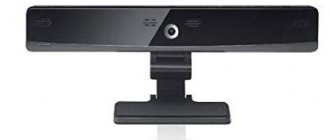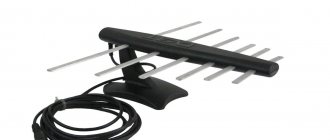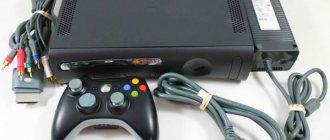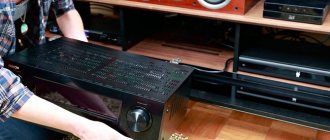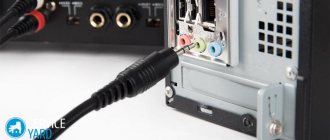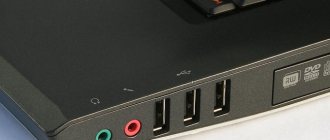Content:
- 1 Why use a VCR
- 2 Common methods of connecting equipment 2.1 Classic RCA connection
- 2.2 Connection via SCART
- 2.3 Application of coaxial cable
- 2.4 How not to knock down the antenna when connecting a VCR
A VCR is a rarity of modern technology that can be used to play cassettes containing films, TV series, and family celebrations. Often it is for the sake of the latter that they take out the radio from the closet and connect it to a regular or modern TV. Let's figure out which TVs are easy to connect vintage equipment to. What to do with modern TVs from LG, Philips, Samsung, where there are no special connectors. And how to generally connect a VCR to a TV.
Why use a VCR
The appearance of the first videotapes created a real sensation in the world of cinema. Foreign cinema and recordings of classic and already legendary films have become available for viewing. Users also learned how to record their favorite TV shows onto cassettes.
Video cameras were also cassette cameras. They filmed all significant events: birthdays, anniversaries, awards, weddings, graduations. Moreover, the quality of the recording was at a good level at that time. As a result, many people have 1-2 video cassettes with very valuable recordings in their closets. And what to do with them:
- You can digitize the recording and convert it to DVD format. Finding salons that still do this is quite difficult, but it is possible. In this case, the maximum quality according to the new standards will be 720x576px.
- Get out a working VCR and just enjoy watching a movie.
For the second option, you will need to understand how to connect the VCR to the TV.
Common methods of connecting equipment
Detailed instructions on how to connect a video recorder to a TV can be found in the operating instructions for the equipment. But since the technology is quite old, many users may lose this document.
The connection is made sequentially, as in any technology, but there are no modern options such as USB, HDMI. Only the following connectors are presented:
- For coaxial cable;
- RCA connector;
- Input for SCART wire.
We will analyze in detail each option for connecting equipment. And we’ll look at options for what to do with connecting a VCR to a modern connection.
Classic RCA connection
RCA cable or tulips are a classic option for connecting vintage equipment. In modern equipment, such connectors are also available, but are rarely used. New “flat” TVs often do not have inputs for tulips. Therefore, you will have to choose a different connection method or buy an adapter.
You can connect the video recorder to the TV via tulips (RCA) like this:
- The yellow connector is inserted at one end into the Video OUT port on the VCR itself, and at the other end into Video 1 or 2 on the TV panel. Typically the connectors are the same color as the plugs to make wiring easier.
- The white and red connectors need to be placed in the audio inputs - these are cables for audio signals.
- Connect the radio to the network and use the Play button. Turn on TV.
- Find the broadcast source in the TV menu - AV and switch to it.
- If the connection is correct, the video menu will be displayed.
In some TV versions there may be not three inputs, but as many as 9. This is done for the layout of color channels. In this option, you need to focus on the colors of the tulip and the designations on the OUT-IN panel of the TV.
Tulips are the easiest way to connect a VCR to an old TV. But in terms of image quality, this option is the weakest. An RCA cable may reduce video and audio quality.
Connection via SCART
A more modern way to connect video equipment and TV. This is an alternative to RCA ports. Moreover, via SCART you can achieve video and audio transmission without loss of quality. But new TVs may not have such a port, then an adapter will be required.
There are no difficulties with this connection: one end of the wire is inserted into the corresponding sized connector on vintage equipment, the other - on the TV. Then both devices turn on. And the AV signal source is located in the TV menu.
Application of coaxial cable
Coaxial or antenna cable fits most modern TVs. To connect the video recorder through it, just follow the simple instructions:
- Insert the cable into the video equipment connector marked RF/COAX Out.
- Connect the other end of the wire to the TV in the RF/COAX In connector.
- Turn on the equipment. On the VCR, press the Play key.
- Using the TV remote control, start searching for channels. When the video frequency is detected, save it under a specific channel number. Through it you can turn on the tape recorder again without a new connection.
- Watch the selected videotape.
The only difference from previous methods is that you need to find a channel that shows video from a tape recorder connected via an antenna wire. At the same time, other TV programs, if they are broadcast via a digital signal via an HDMI cable, will not be interrupted. But you will have to switch from HDMI to TV or another signal source where the VCR will be picked up.
You need to start searching for channels on your TV, not on your digital set-top box. If you have this additional equipment connected, remove the remote control from it during setup so as not to get confused in the settings.
How not to knock down the antenna when connecting a VCR
Broadcasting digital television is also possible via coaxial cable in an apartment or private house. They come from a satellite dish or a common wire in the entrance of a high-rise building. And so that you don’t have to pull out the antenna and insert the cable from the VCR, you can do the following:
- Buy or install an attachment that will act as an adapter.
- Purchase two sets of RCA cables and one coaxial cable.
- Connect the Cable Out ports on the set-top box to the RF In on the video equipment using a coaxial cable.
- Connect one tulip to the ports on the set-top box Audio Out and Video Out and to the inputs on the video recorder Video In, Audio In.
- Include the second set of tulips in the VCR and TV (Video In or 1).
- Turn on the equipment and check its functionality.
Such a parallel connection will allow you to quickly switch between the video camera and the antenna signal, but will significantly reduce the quality of the broadcast. A modern solution is to connect digital television and additional equipment separately, using different wires.
How to connect a VCR to a TV
The instruction manual for any VCR should contain an extremely clear procedure for connecting devices. If the equipment comes with the necessary wires, the procedure will take a couple of minutes. To complete the task, you need to connect the wires to specific ports of the TV device and video device.
Despite the simplicity of the process, many users are poorly versed in interface types, so they do not know which cable is needed for a particular port. To connect the TV and tape recorder, use an RCA cable, coaxial cord or Scart wire.
Each of the options listed has its own pros and cons. However, you only need to choose a cable based on the type of connector on your TV and VCR. For example, most TV devices have Scart ports, while others have RCA ports.
Do not forget that some modern TVs are not equipped with old-type connectors, so you will have to buy an adapter to connect. More details about possible connection methods are described below.
RCA cable - tulip
The name tulip comes from the appearance of the RCA cable. It has the shape of three plugs, which are colored yellow, red and white. There are modern models of TV devices that support the interface in question. To properly connect your TV and VCR via an RCA cable, you must follow these instructions:
- Take a wire with a socket painted yellow and connect it to the video camera via “Video Out”.
- The reverse side of the product will need to be installed into a TV device using the “Video IN” or “AV” connector. Some models of equipment have connectors on the back that are also colored red, white and yellow. Device manufacturers resort to this to make it as easy as possible for the device owner to determine the connection diagram. If there is no name above the port, then you need to insert the plug into the connector of the corresponding color.
- Connect the remaining wires in the same way - red to red, and white to white. These elements are designed to transmit an audio stream.
- When all nodes are connected, you will need to connect the VCR to the network and press the power button. The names of the buttons may vary depending on the model.
- Upon completion, you need to take the TV remote control and turn on the device. Next, you need to go to the settings menu and select “AV” or “Input” mode as the data transmission source.
If the connection is successful, the picture from the video camera will be displayed on the TV screen.
SCART interface
The best option for connecting a VCR and TV is to use a SCART interface. This cable provides maximum picture quality with good sound. If the port in question is missing, the user will need to purchase an adapter (for RCA or USB).
The only drawback of the SCART connector is that almost all modern TVs are not equipped with it. However, if you can find an adapter, the docking procedure will take a few minutes.
If using an adapter for an RCA connector, the user will need to use a cable with several tulips. The RF/ANT IN port, which is located in the VCR, will be where the cable from the antenna will be inserted. Thanks to this, the owner of the device will be able to enjoy his favorite programs, TV series or films without any problems.
Connecting a VCR to a plasma TV is carried out in a similar way. The only difference will be the types of cables and connectors used. When connecting, you need to be as careful as possible and follow the instructions. Otherwise, you can burn one of the interfaces.
Via coaxial cable
Another available method is to use coaxial cable. The procedure is quite simple and involves connecting the VCR to a TV device via the “RF/COAX OUT” connector. What should be done:
- Connect the wire to the VCR to the above port.
- Connect the reverse side of the cable to the “RF/COAX IN” connector, which is located on the TV.
- Turn on the VCR, insert the tape and press the play button.
- Find the frequency with the image and audio stream from the video camera using the channel search function.
- Set the channel number that will serve as the video display.
Parallel to cable television
If you have a cable TV box in your home, then you can connect the VCR to the TV device in the same way that involves using an RCA cable. However, before this you will have to perform additional manipulations. What should be done:
- Insert the coaxial wire into the cable box's "OUT" port and the VCR's "RF IN" connector. It is worth considering that with this connection method the image and sound quality will be quite low.
- At the next stage, you will need to connect the RCA cable to the “Video OUT” port of the TV set-top box through the yellow plug. The reverse side will go into the “Video IN” jack on the VCR.
- Next you will need to start transmitting the audio stream. For this, red and white plugs are inserted into the “Audio OUT” and “Audio IN” ports.
- Then proceed to connect the AV wire. The user needs to take the yellow wire and connect it to the VCR via the “Video OUT” interface. The reverse side will go to the TV device in the “Video IN” port. Connect the white and red plugs to the “Audio OUT” and “Audio IN” connectors.
- After successful connection, you will need to connect all devices to the common network. On your TV device, select “Video 1” mode as the signal transmission source. In the video, you need to select “Cable” for this. If the image does not appear on the TV, you will need to check that all cables are connected correctly. Otherwise, please refer to the instruction manual for help.
Possible faults
Connecting a VCR to an LG, Samsung, or Philips TV directly or through adapters is quite simple. The main thing is not to get confused in the inputs and outputs. But after connecting the equipment, various technical problems may arise, which can be resolved quickly enough:
- No signal due to broken cable or connector. Before connecting equipment, carefully inspect the wires for broken braiding, bends or clamps. Check the condition of the connectors. You can clean them with a soft brush. If the problem persists, try another connection option.
- No required entry. Inspect the ports on the video and TV. If the latter does not have a single suitable option, you will have to buy an adapter. To purchase the desired option, you should write down the names of the ports from the video recorder and TV.
- The TV does not recognize signals. The reason may be a cable, connector or broken socket. The test takes place using a different connection method. If the problem persists, it is necessary to replace the connectors on the equipment or send it for repair.
- Overlaying sound from a TV channel with cues from films from videotapes. The reason is the overlap of the antenna signal with the audio. You can solve the situation by moving the antenna cable from side to side to shift its position. Then the lower frequencies from the VCR will not be interrupted by TV channels.
These are the most common faults. It's also worth considering that VCRs are old technology and may not work on their own. They encounter problems such as cassette jamming, failure to rewind, and many other defects. In such a situation, you need to take the video camera for repair or digitize the tapes into a new format onto DVD discs.
Found a mistake? Select it and press ctrl+enter
- 60
Basic connection methods
There are three connection methods, each of which has its own characteristics. They must be taken into account so as not to break the units. Knowing all the connection options will also help you choose the one that is ideal for your devices. The outcome of the process depends on this.
So, you can connect using:
- coaxial cable;
- SCART cable;
- RCA cable;
Via coaxial cable
To connect using this method, you will need a wire with a resistance of 75 ohms.
It is very important to be careful and strictly follow the algorithm of actions that will be presented below. Because even the most insignificant, at first glance, mistake can lead to household appliances not working. And it’s good if the VCR just doesn’t connect and you can try again. But there is a high probability that both devices will simply break. Then you will have to call professionals who can fix them.
IMPORTANT! Before starting the procedure, be sure to disconnect the equipment from the electricity. Power surges can damage not only your equipment, but also you personally.
Now you can begin the procedure, in which there is nothing complicated.
- You need to insert one end of the cable into the connector on the old VCR, which may be called either RFOut or COAX Out.
- The other end is inserted into the COAX In (RF/ANTIn) connector of the television receiver.
- After this, you can connect the equipment to electricity and start it up.
You will also need to select a television channel through which the recording from the cassette will begin to play.
Via RCA cable
When using this method, keep in mind that unplugging your equipment is extremely important. If this is not done, then all the contacts will burn out, and you will be left with nothing.
An RCA cable is a wire with three different colored plugs: red, yellow and white. Be careful not to mix up the colors to avoid mistakes.
The yellow end is connected to the VideoIn socket on the TV, and the opposite end of the wire is connected to the VideoOut socket. Please note that manufacturers often make the connector shell the same color as the plug that is supposed to be connected to it. But this is not an immutable rule; sometimes discrepancies occur. Therefore, it is better to play it safe and focus solely on the names located next to the nests.
The remaining plugs are connected in the same way. On a VCR this is the VideoOut socket, and on a TV it is Video1/AudioIn.
When all these operations are successfully completed, you need to check whether you have connected everything correctly. If everything is in order, then you can connect the equipment to electricity and start it up. On the TV you should specify the desired operating mode: Video 1 or Input 1.
Now you can start recording. The RCA cable is now complete.
Via SCART connection
This method provides the best quality playback of both pictures and sound. If you compare it with previous results, the difference will be obvious.
These are the connectors found on most modern TV models. The connection does not require additional skills or actions, so anyone who wants to watch old recordings made with a video camera on the big screen and remember the old days can handle it.
If there is such a connector on the TV, you just need to insert the plugs into these sockets. They are marked with the SCART inscription, so finding them will not be difficult. They are presented in a horizontal form and are clearly visible on the body.
If such an input is missing, then you can use SCART-RCA. In this case, the wire will connect the SCART connector of the TV and the RCA output of the VCR. In order for the signal to be transmitted using S-Video, you will need a SCART-S-Video-RCA cable.
The RF/ANTIn input on the VCR is needed to connect an antenna. This will allow you to watch any films and programs that you like on a larger screen, find out news and other interesting information.

